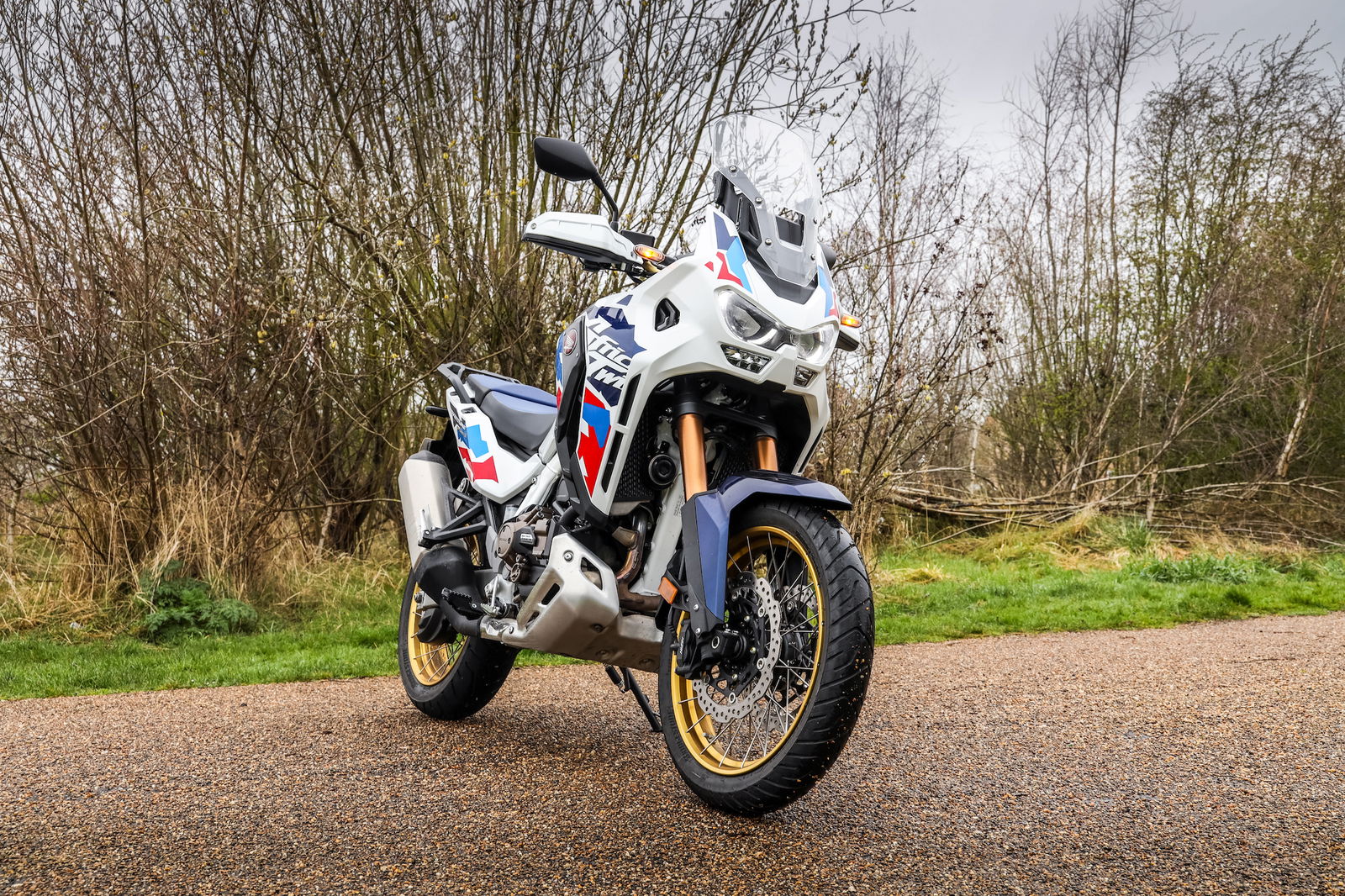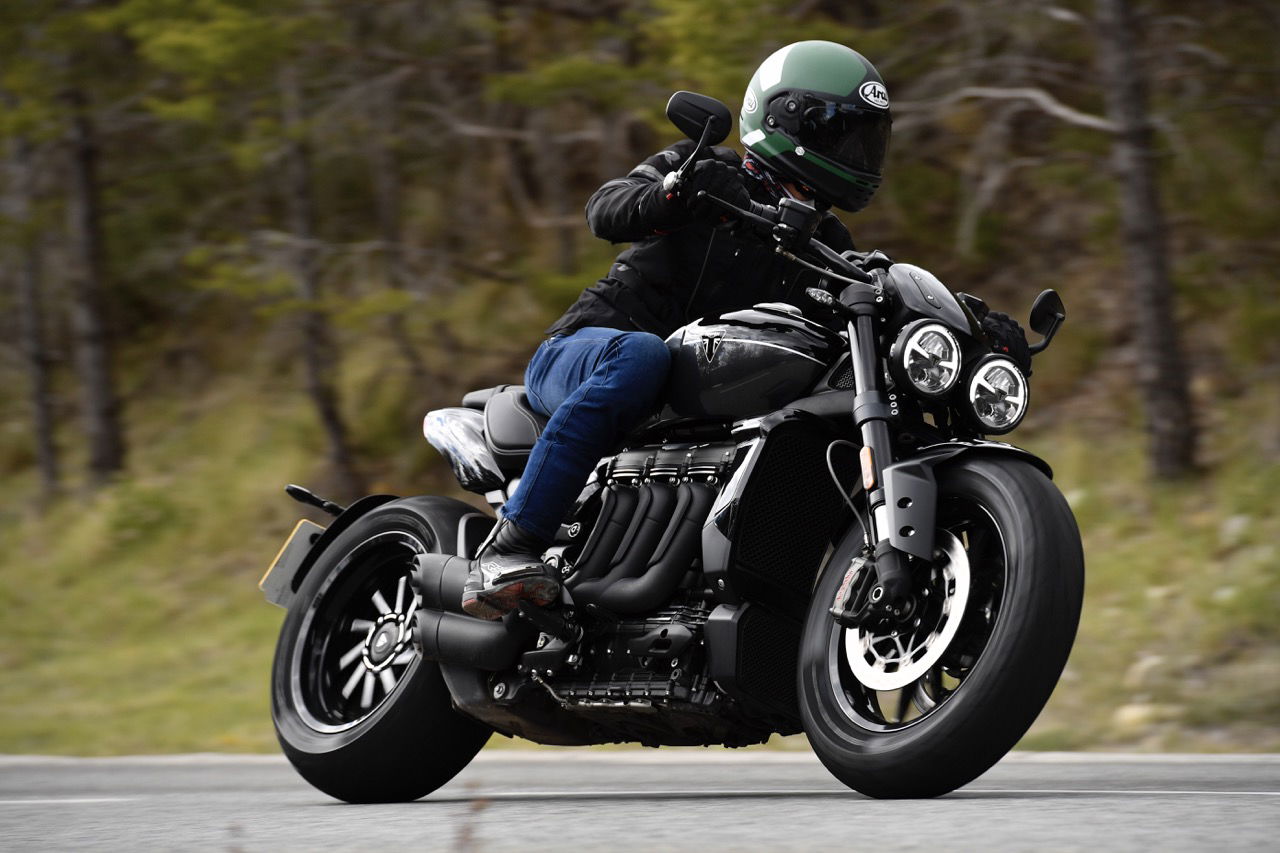2024 Honda Africa Twin Adventure Sports Review: Is The 19in Front A Good Thing?
Honda’s big-bore ADV has been taken in a more road-oriented direction than ever with the introduction of a 19-inch front wheel for the Adventure Sports version. We take a ride to see what it's like

In a lot of ways, adventure bikes are like the SUVs of the four-wheeled world. They may be quite capable of going off-road, but a lot of owners might never venture away from the asphalt. Many will be more interested in things like extra suspension travel making life over rough patches of asphalt easier, as well as comfortable upright riding positions and ample mounting options for luggage.
This isn’t lost at all on manufacturers. Only a few months ago we were testing the Suzuki V-Strom 800 RE, which ditched the DE’s 21-inch front wheel for a 19-inch one and reduced the suspension travel for a more road-oriented ride. In the world of bigger-bore ADVs, meanwhile, Honda has just done the same to the 2024 version of the CRF1100L Africa Twin Adventure Sports ES, to give it the full name. Rolls of the tongue.
It has also swapped a 21-inch wheel for a 19 and dialled down the suspension travel front and rear. But how much of a difference does that make to the bike’s on-road manners? We took a back-to-back ride in the standard Africa Twin with its 21-inch front and the Adventure Sports with its 19-inch front hoop and then took the latter away for the week.
We clocked a few hundred miles on the bike, encompassing urban riding, dual carriageways and twisting country roads along the way.
Africa Twin Adventure Sports price, availability and colours
Buying an Africa Twin Adventure Sports is a pricey business, as there’s no longer a passive suspension option. A manual AT AS with electronic suspension is £16,299, compared to £14,749 for the outgoing version of the bike on a passive fork/shock.

Spec the dual-clutch transmission (DCT), and the price rises to £17,599. Both versions are available to order now, in just two different colours - Matte Ballistic Black Metallic, or Pearl Glare White (as tested).
What’s different about the Adventure Sports?
As mentioned, the main difference between the Adventure Sports and the standard Africa Twin is the front wheel size, dropping from 21 to 19 inches. At the same time, suspension travel has dropped by 20mm at the front and 10mm at the back to a still reasonably generous 210mm at the front and 200mm at the rear.
This will compromise its off-road ability - the drop in suspension travel plus the small wheel reduces the ground clearance by 30mm, and also, a smaller front wheel won’t roll over obstacles as well as a bigger one. The trade-off is better on-road manners, which we’ll get back to soon.

Although the travel is different, the base hardware of the suspension is the same - it's all supplied by Showa, featuring 45mm upside-down forks at the front and a gas damper at the rear, each using Showa’s EERA (Electrically Equipped Ride Adjustment) technology.
Working in conjunction with a Bosch six-axis inertial measurement unit (IMU), the system continually adjusts the damping resistance according to what’s going on under the tyres, but the general behaviour can also be set with four different damping modes.
These can be changed by flicking between the rider modes of Tour (hard damping), Urban (mid), Gravel (soft), and off-road (off-road!), but it’s also possible to tweak these modes to use different damping settings or set up two different custom user profiles.

All of this can be done via the 6.5-inch colour touchscreen, something also found on the standard Africa Twin. What you won’t find on that model, though, is the fuel tank on the AS - it’s 6.5 litres bigger, giving a sizeably 24.8 litre total for comfortably over 300 miles between fill-ups.
That enlarged tank feeds a 1084cc liquid-cooled parallel twin with a 270-degree crankshaft for an offset firing order like the V-twin of the original Africa Twin. It develops 100bhp at 7500rpm and 82.6lb ft of torque at 5,500rpm, kept in check with lean-sensitive traction control, cornering ABS, rear wheel lift control and wheelie control. All of that is found on the regular, 21-inch wheel AT.
What’s it like to ride?
Jumping from the regular Africa Twin to the Adventure Sports, the different setup is immediately noticeable. For one thing, the seat height is lower - 835-850mm, compared to 850-870mm for the regular AT. There's also a 795mm low seat option, compared to an 825mm optional lower perch on its sibling, opening the bike up to many more riders.

During low-speed manoeuvring, the Adventure Sports feels easier to manage, helped by both that lower seat height and the smaller front wheel. The latter element really starts to pay dividends when you’re threading through a twisty country road, however, when the Adventure Sports reveals itself to be far more eager to change direction.
The reduced suspension travel helps further, cutting down weight transfer and trimming the centre of gravity. The regular AT is by no means out of its depth when ridden quickly on twisty stuff - the Adventure Sports is merely a little sweeter, and a little more confidence-inspiring. It does still feel like a hefty thing when tipping in, though, because it is - specced with the DCT as it is here, the Africa Twin weighs in at 253kg, a figure it can’t always hide.
The engine feels more like a workhorse rather than a truly emotional unit that begs to be wrung out. It certainly doesn’t have the character of the ‘L-twin’ in the Ducati Multistrada V2, nor the duality of Triumph’s quirky T-plane crank triple engine in the Tiger 1200 GT. It also doesn’t feel massively quick at full twist, the 100bhp output blunted by that chunky kerb weight, and it can be a little vibey at certain speeds.

The twin feels at its happiest in the mid-range, which is punchier for 2024. As a consequence, it doesn’t really matter what gear you’re in. A twist of the throttle is always going to see speeds rise at a pleasing rate. Also, it’s still great at chugging along at low revs, making it ideal for unpaved excursions - not that you’re likely to be making a beeline for them if you’ve chosen an Adventure Tourer.
The DCT does affect the engine’s appeal a little. The gearbox’s silky smooth shifts are nice and all, but they also make you yearn for the aggressive cog swaps of a quickshifter-assisted manual gearbox. It can also be a little slow for the clunch to engage from a standstill, making for awkward getaways.
You can either let the bike decide upon the gear selection, with ratios held onto for longer in the sport mode or take manual control with the two easy-to-reach plastic buttons in front of the left-hand grip. It works well for the most part, but unless there’s a particular reason you struggle with clutch levers and/or gear selectors, we’d recommend saving the £1,300 and getting a manual.

The electronic suspension system, first appearing on the AT range in 2020, is clever, and you do notice the difference between the modes. Tour with its Hard suspension setting is
surprisingly firm for a bike like this, likely amplified further with the reduction in fork/shock travel. You may find yourself wanting to dial it back to Mid for additional ride comfort.

Setting up the custom modes is made easy enough thanks to the standard-fit touchscreen, which can be used with a gloved hand. The menus are simple to navigate, and all of the key information is displayed very clearly.
Finally, there’s a new windscreen intended to reduce buffeting. You still get some, especially if you’re on the taller side like me, but it’s far from the worst ADV screen we’ve tested. There are five levels of adjustment, but two clamps on on either side of the screen need to be pressed to raise or lower it, stopping you from changing the position on the move.
Should you buy an Africa Twin Adventure Sports?
If you were previously eying up an Africa Twin Adventure Sports but were put off its lofty seat height and greater off-road focus than some rival bikes, you’ll get on very well indeed with the new version. It’s a more accessible, asphalt-friendly bike that hasn’t lost sight of what makes the normal Africa Twin so likeable.

It’s just a shame you no longer have the choice to drop the electronic suspension. Not all riders will feel like they’re getting much of a real-worth benefit, but certainly will notice the bigger hole in their savings account. The new setup makes the Adventure Sports look confidently priced - combined with the smaller wheel size, it’s now closer to machines like the aforementioned Ducati Multistrada V2, which it struggles to compete with on an emotive level.
But as a solid, sensible choice with all the usual trappings of a new Honda like great built quality and good dealership back-up, the Africa Twin Adventure Sports is still a bike we can recommend. Just stick with the manual version, if you can.


